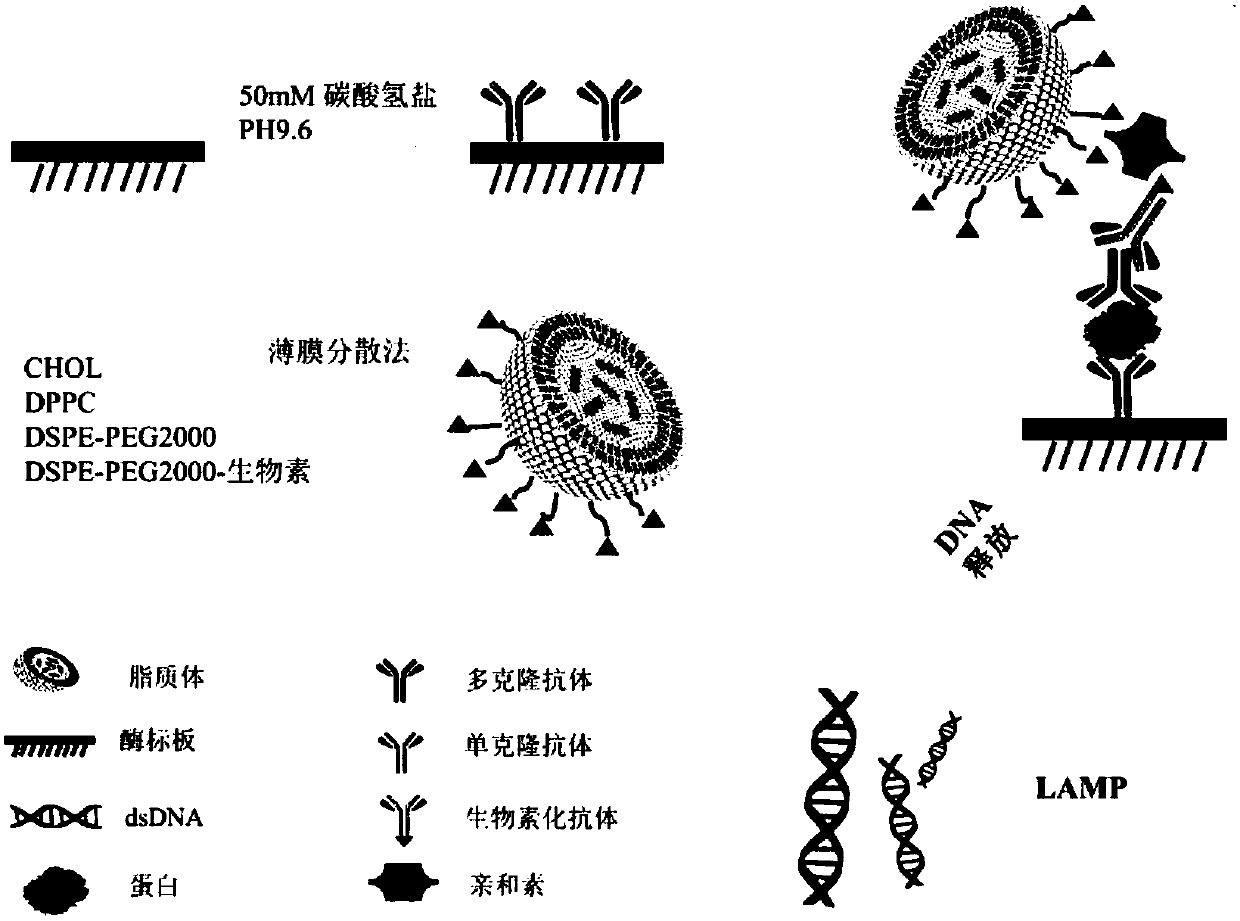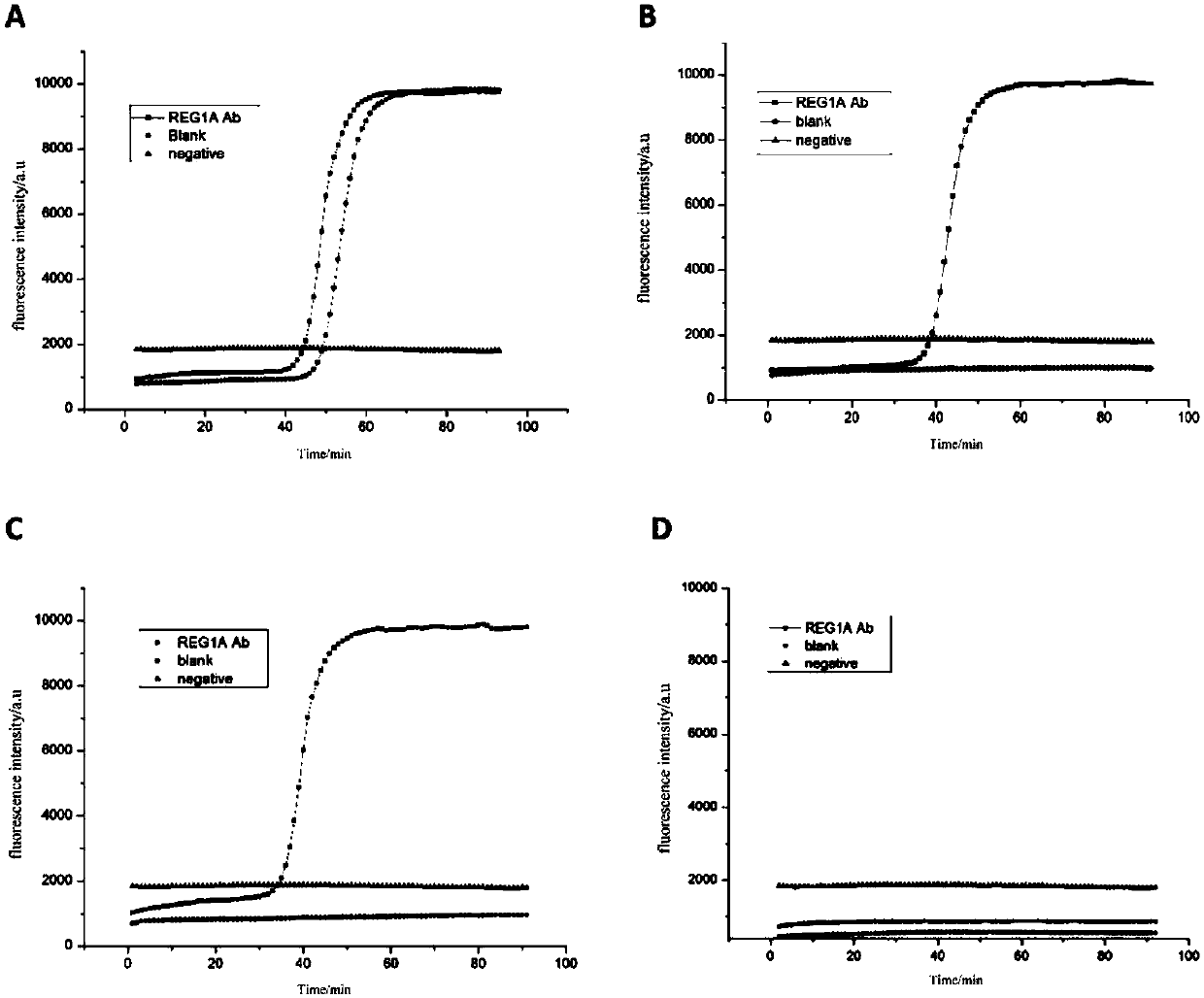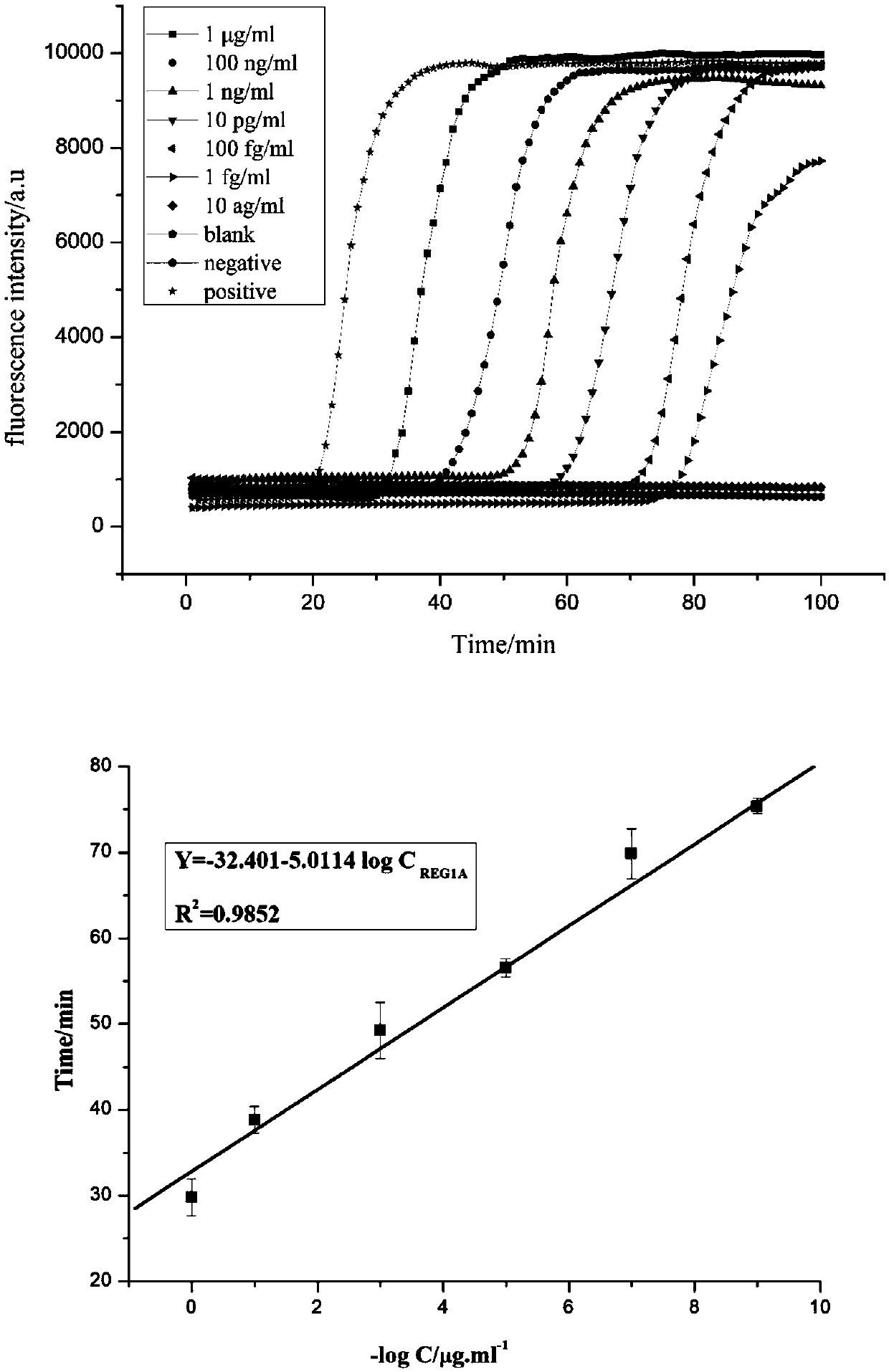Biotinylated liposome used for detecting pancreas cancer marker REG1A, and preparation method and applications thereof
A biotinylation and liposome technology, applied in biochemical equipment and methods, other methods of inserting foreign genetic materials, and the determination/inspection of microorganisms, can solve the problems of low specificity and high warning threshold, and achieve high sensitivity The effect of detection, easy operation and good stability
- Summary
- Abstract
- Description
- Claims
- Application Information
AI Technical Summary
Problems solved by technology
Method used
Image
Examples
Embodiment 1
[0052] This embodiment is a method for preparing biotinylated liposomes for detecting pancreatic cancer marker REG1A, which includes the following steps:
[0053] a) Weigh DPPC, cholesterol, DSPE-PEG2000, DSPE-PEG2000-biotin on an analytical balance (the molar ratio between the four is 95:95:9:1, the total mass is 36.5mg), and place them in a 10ml centrifuge tube, Add 3.43ml of chloroform and 571μl of methanol solvent (the volume ratio of the two is 6:1, the total volume is 4mL), and sonicate for 10min to accelerate the dissolution.
[0054] b) The above-mentioned liquid after ultrasonication was added to a 50ml eggplant-shaped flask, put into a built-up rotary evaporator, and evaporated the organic solvent (35°C) under reduced pressure to form a thin layer of lipid film on the inner wall of the flask.
[0055] c) Add the pre-prepared 2ml PBS solution containing 1μg DNA dropwise into the flask, and at the same time shake the flask in a water bath at 45°C to dissolve and detach...
Embodiment 2
[0061] This example is a non-diagnostic and non-therapeutic method for the detection of pancreatic cancer marker REG1A based on the biotinylated liposome above, and a schematic flow chart of the ultra-high sensitivity detection of REG1A protein based on liposome-encapsulated DNA is as follows figure 1 shown.
[0062] Specific steps are as follows:
[0063] 1) Coat Corning coast 9018 ELISA plate with 1 μg / ml monoclonal rat antibody of REG1A, overnight at 4°C.
[0064] 2) The plate was washed twice with PBST (0.05% Tween 20 PH7.4), and the detection plate was blocked with 250 μl of 23% BSA for 1 hour. Repeat plate washing 4 times.
[0065] 3) The recombinant protein was diluted 10 times and added to the assay plate, and incubated at 37°C for 1 hour. Repeat plate washing 4 times.
[0066] 4) Add REG1A polyclonal mouse antibody 1 μg / ml, and incubate at 37°C for 1 hour. Repeat plate washing 4 times.
[0067] 5) Add 100 μl of biotinylated goat anti-rabbit antibody at a ratio o...
Embodiment 3
[0076] This embodiment is the optimization of the concentration of biotinylated liposomes. The steps are the same as in Example 2. The concentrations of biotinylated liposomes used in this embodiment are 1.2mg / ml, 0.24mg / ml, 0.12mg / ml, 0.06mg / ml (corresponding to figure 2 Part A, Part B, Part C, Part D) of the figure 2 The amplification results show that when the concentration of biotinylated liposomes is 1.2mg / ml, both the REG1A protein group and the blank control group have "S" type amplification curves; when the concentration of biotinylated liposomes is When the concentration of biotinylated liposomes was 0.24 or 0.12mg / ml, only the REG1A protein group appeared "S" type expansion curve; increasing curve.
[0077] From the above experimental results, it can be seen that in the method for detecting the pancreatic cancer marker REG1A of the present invention, the preferred concentration of biotinylated liposomes is 0.12-0.24 mg lipid / ml.
PUM
 Login to View More
Login to View More Abstract
Description
Claims
Application Information
 Login to View More
Login to View More - R&D
- Intellectual Property
- Life Sciences
- Materials
- Tech Scout
- Unparalleled Data Quality
- Higher Quality Content
- 60% Fewer Hallucinations
Browse by: Latest US Patents, China's latest patents, Technical Efficacy Thesaurus, Application Domain, Technology Topic, Popular Technical Reports.
© 2025 PatSnap. All rights reserved.Legal|Privacy policy|Modern Slavery Act Transparency Statement|Sitemap|About US| Contact US: help@patsnap.com



